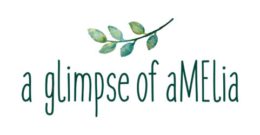Tuesday Review- Jiff
Jiff-
🔹Calcium Carbonate= It is a common substance found in rocks as the minerals calcite and aragonite (most notably as limestone, which is a type of sedimentary rock consisting mainly of calcite) and is the main component of eggshells, snail shells, seashells and pearls. Calcium carbonate (or calcite) and silica are two types of minerals often found in cleaning products. Calcium carbonate is the mildest of abrasives, with the finest abrasive found in the cream form. May cause irritation folios, skin and eyes. Extracted by mining or quarry.
🔹Water= Water (Aqua)= Water, a solvent for ingredients that do not like to dissolve in oils but rather in water. Usually number one on the ingredients list so it makes up the majority of the product. The water used in cosmetics is purified and deionized (it means that almost all of the mineral ions inside it is removed). This way, the products can stay more stable over time. If there is water in a product there will also be a preservative so be sure to check out what that is.
🔹Sodium Dodecylbenzenesulfonate= Petroleum derived. May cause irritation to sensitive skin. Sodium dodecylbenzenesulfonate is one of a group of salts of alkylbenzene sulfonates used in cosmetics as surfactant-cleansing agents. … Dodecylbenzenesulfonate salts are not toxic
🔹Sodium Carbonate= Aka washing soda- Sodium carbonate is a strong alkali base used in green cleaning products. Often found in powder form, it’s used in a wide range of industries, such as in cleaning and personal care products and as a fungicide, microbicide, herbicide, and pH adjuster. Deemed safe for most people. Sodium carbonate is used in several cleaning products, including green cleaning ones, due to its disinfectant properties and ability to cut through grease and soften water. Excessive contact may irritate with blistering and redness.
🔹C9-C11 Pareth-6= Suspected to be an environmental toxin. Polyethylene glycol ether of a mixture of synthetic C9-11 fatty alcohols with an average of 6 moles of ethylene oxide. The alcohol here ethylene oxide isn’t great and can be contaminated with the carcinogen 1, 4 dioxane. Some concern for skin allergies and irritation.
🔹Sodium Cocoate= Sodium cocoate is the sodium salt of coconut acid. It usually appears as a white paste or granules, and is derived from a mixture of fatty acids from coconut (Cocos nucifera) oil. Sodium cocoate can be produced by reacting coconut fatty acids with a strong base, typically sodium hydroxide. This process can be undertaken with almost any fats and alkalis, and is known as saponification.
🔹Sodium Bicarbonate, 1,2= While baking soda is a neutral compound, its pH is slightly higher (so it’s basic, or opposite to acidic). This is the key as to why baking soda is such a good cleaning product. Baking soda comes out of the ground in the form of minerals nahcolite and trona, which are refined into soda ash (a.k.a. sodium carbonate), then turned into baking soda (a.k.a. sodium bicarbonate)
It is mineral derived. Baking soda causes dirt and grease to dissolve in water, so it is very effective in cleaningnumerous spots in the kitchen, including countertops, refrigerators, and stovetops. And sprinkled on a sponge or dishrag, baking soda forms a mildly abrasive scouring powder. Safe for use for most people.
🔹Benzisothiazoline-3(2H)-One= widely used in industry as a preservative in water-based solutions such as pastes. Causes skin irritation, May cause an allergic skin reaction, May kill plants, fish, birds or other animals and insects or may be very toxic to aquatic life with long-lasting effects. This then affects delicate environmental ecology and food supply in ways we don’t fully understand yet.. Benzisothiazolinone has also been linked with Systemic Contact Dermatitis via airborne contact. Permitted for use in pesticides.
🔹Perfume also known as fragrance= Individual ingredients are not disclosed. Can have up to 300+ ingredients companies DO NOT have to disclose. Avoid. Synthetic. Harmful to our immune system and Nervous system. Allergic reactions. Asthma.
🔹Ci 19140= Tartrazine a synthetic yellow azo dye used mostly for food colouring. Symptoms from tartrazinehypersensitivity can occur from either ingestion or cutaneous (Skin) exposure, and the effects can include anxiety, migraine, depression, blurred vision, itching, general weakness, hot sensations, a feeling of suffocation, purple skin patches and sleep disturbances.

